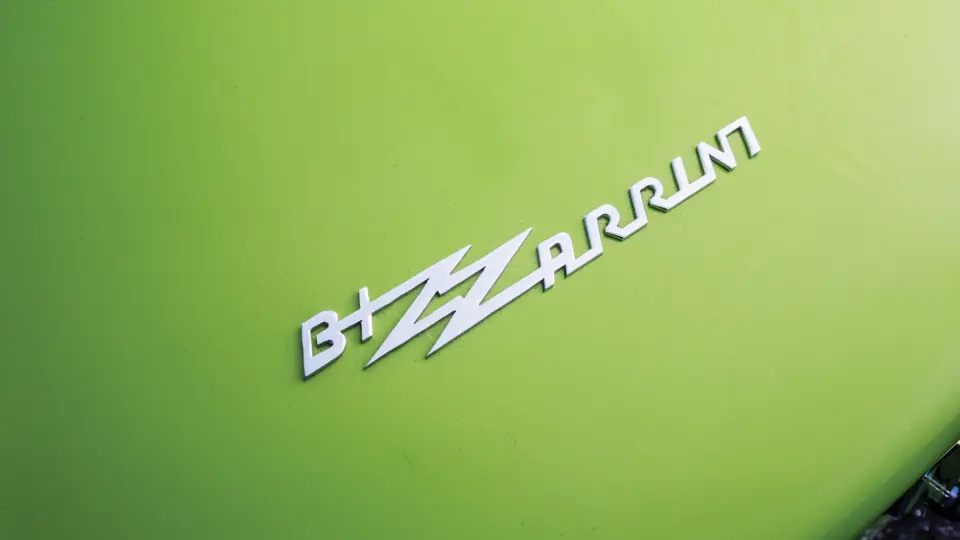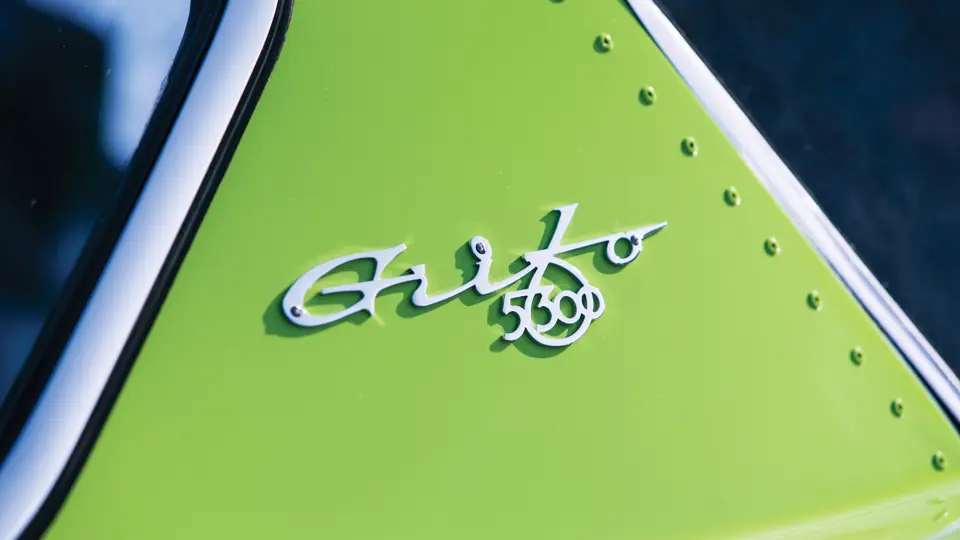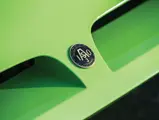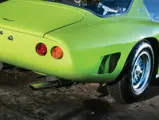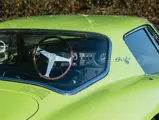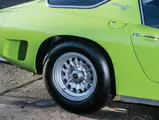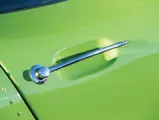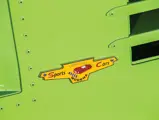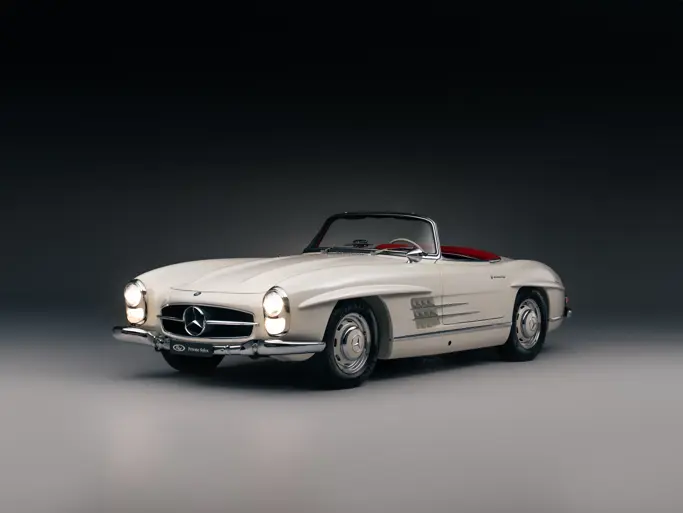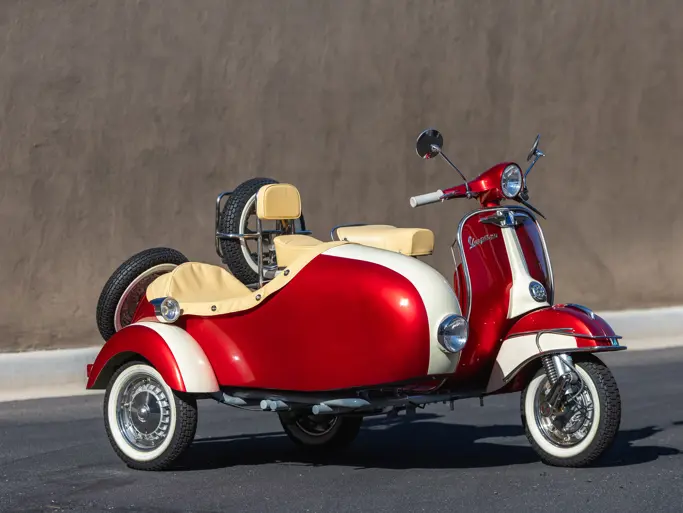
1965 Iso Grifo A3/C Stradale
{{lr.item.text}}
€1,036,000 EUR | Sold
{{bidding.lot.reserveStatusFormatted}}
- Early rivet-body example
- Recently restored by a marque specialist
- Dubbed the “Green Apple”
- Exemplaire des débuts, à carrosserie rivetée
- Récemment restaurée par un spécialiste de la marque
- Surnommée la « Green Apple » (Pomme Verte)
350+ hp, 5,359 cc OHV Chevrolet Corvette V-8 engine, four-speed manual transmission, independent front suspension via wishbones, coil springs, telescopic shocks, and an anti-roll bar, de Dion tube, coil-spring, hydraulic shocks, longitudinal struts, and an anti-roll bar rear suspension, and four-wheel disc brakes. Wheelbase: 2,446 mm.
Moteur V-8 Chevrolet Corvette, 5 359 cm3, + 350 ch, soupapes en tête, boîte manuelle quatre rapports, suspension avant indépendante par triangles, ressorts hélicoïdaux, amortisseurs télescopiques et barre antiroulis, suspension arrière par essieu de Dion, ressorts hélicoïdaux, amortisseurs hydrauliques, bras longitudinaux et barre antiroulis, freins à disque sur les quatre roues. Empattement: 2 446 mm
Giotto Bizzarrini was most famously known as the Ferrari engineer responsible for the design and racing success of the fabled GTO. After leaving the factory, Bizzarrini joined one of his most enduring clients, and the one with which he has been most closely associated, Milanese industrialist Renzo Rivolta, of Isothermos and Isetta fame. Rivolta was a keen auto enthusiast who wanted to build a genuinely reliable GT car, and Bizzarrini worked closely with Iso’s chief technician, Pierluigi Raggi, in developing an extremely sophisticated platform-type chassis for the 2+2 Iso Rivolta GT. To solve the reliability issues that Renzo had encountered with his personal GT cars, Isos used a Chevrolet Corvette engine and transmission. After much development work, the Iso Rivolta GT debuted to rave reviews at the 1962 Turin Show.
Next came the landmark model that would serve as the basis for Bizzarrini’s own car: the Iso Grifo. It was a spectacular two-seat GT that was based on a shortened Rivolta chassis, and two variants of it were shown at the model’s debut at the 1963 Turin Auto Show. The Grifo A3/L (“L” for Lusso, or luxury) was on the Bertone stand, whilst the other, the A3/C (“C” for Corsa, or competition) debuted on the Iso stand; the latter car was built by Bizzarrini in his Autostar Works in Livorno. Both Grifos had Giugiaro-designed coachwork, and they featured a stunning combination of Italian styling, a race-inspired chassis, and reliable Chevrolet Corvette V-8 power.
For the next 18 months, Bizzarrini made his version of the Grifo under agreement with Iso, and they achieved great success on the track. During this period, however, the relationship between Rivolta and Bizzarrini grew increasingly conflicted, with Bizzarrini wanting to focus on racing and Rivolta wanting to concentrate on production. In the summer of 1965, a deal was ultimately struck, where Bizzarrini would continue to build the cars under his own name in the “Strada” road going form and the “Corsa” form for racing.
Whilst the machine was ostensibly a street car, its specifications read like those of an all-out competition car, with lightweight aluminium bodywork, a fabricated platform chassis, and a semi-monocoque body riveted to the frame. This advanced chassis, combined with near-perfect weight distribution, resulted in outstanding performance and incredible handling. Output of the Chevrolet V-8 engine ranged between 350 and 420 horsepower, providing a claimed top speed of up to 180 mph.
However, very few examples were produced during an approximate six-year production run, including 124 A3/Cs and approximately 10 fibreglass-bodied examples. Ultimately, the engineer returned to private practice as a consultant, working for such varied companies as Iso and AMC and building the occasional car for an admiring client.
Chassis number B 0216 was originally sold new as an Iso Grifo A3/C to Auto Becker in Germany. As an early car, prior to the Iso/Bizzarrini split, it is believed to be one of only twenty riveted-aluminium Drogo-bodied examples with left-hand drive. As such, it also included many features similar to the Le Mans competition variant, namely the aforementioned riveted bodywork, as well as the side vents and four taillights. It is also believed to have been originally finished in the unique and eye-catching Mela Verde (similar to Lamborghini’s famous Verde Miura), which was only discovered during its recent comprehensive restoration.
At some point in the late 1960s or early 1970s, the car was returned to the factory. During that time, it was rebuilt and modified to appear more in line with the later Bizzarrini 5300 GTs. As such, the rivets were filled in and the body was painted black. It is also believed that, at this time, the car was re-titled and sold as IA3 0283. Around this time, the Iso left Italy for Germany and was then shipped to the U.S. around 1978. The car remained, in its updated configuration, with several subsequent owners in the U.S. for quite some time, until it was sold to a new owner in 2002.
The following year, the car was sent to the renowned restoration shop of Chuck Wray and Kendall Merritt, who thoroughly inspected the car. As its older restoration was starting to fade, evidence of some of the earlier features were beginning to show. The black paint had shrunk, cracked over time, and started to show signs of the rivets that had been covered up. Also, after further inspection, its original chassis number, B 0216, was found stamped into the chassis, and upon purchase, it was titled back to B 0216, as the other number it had been known by could not be found.
In 2012, the previous owner commissioned a complete restoration of this early A3/C by one of the leading marque restorers, Salvatore Diomante in Turin, Italy. Interestingly, when the black paint was first stripped off of the car, the original vibrant green was found underneath, even on the door jambs. The running gear, suspension, braking system, and electrical system were all completely restored to as-new condition, and the interior was completely re-trimmed in correct black leather. The later-designed dashboard was also returned to the early style, which featured a centre-mounted speedometer and tachometer that were angled toward the driver.
This extremely rare and absolutely flawless Iso A3/C, known in many circles as the 1965 GTO, is an exceptional example. It has been returned to its original look, including in its original eye-popping colour, and it is known as, simply, the “Green Apple”.
Giotto Bizzarrini s'est rendu célèbre, quand il était ingénieur chez Ferrari, en participant à la conception et aux succès en compétition de la fameuse GTO. Après avoir quitté l'usine, Bizzarrini se rapprochait d'un de ses clients fidèles, avec qui il connaîtra la plus proche association, l'industriel milanais Renzo Rivolta, connu pour l'Isothermos et l'Isetta. Rivolta était un authentique passionné d'automobile qui souhaitait produire une voiture de Grand Tourisme fiable. Bizzarrini a donc travaillé en collaboration étroite avec Pierluigi Raggi, technicien en chef d'Iso, pour mettre au point un châssis-plateforme extrêmement sophistiqué pour l'Iso Rivolta GT 2+2. Pour résoudre les problèmes de fiabilité que Rivolta avait rencontré sur ses voitures de sport, Iso choisissait un moteur et une transmission de Chevrolet Corvette. Après un important travail de mise au point, l'Iso Rivolta GT faisait ses débuts au Salon de Turin 1962 et s'attirait les louanges de la presse.
Cette voiture était suivie d'un modèle important, qui allait servir de base pour la propre voiture de Bizzarrini. L'Iso Grifo était une spectaculaire GT deux places, basée sur un châssis Rivolta raccourci et dévoilée sous forme de deux variantes au Salon de Turin 1963. La Grifo A3/L (« L » pour Lusso, luxe) était sur le stand de Bertone alors que l'autre, l'A3/C (« C » pour Corsa, compétition) se trouvait sur le stand Iso ; la deuxième voiture était produite par Bizzarrini dans son atelier Autostar à Livorno. Les deux Grifo comportaient une carrosserie dessinée par Giugiaro, et elles constituaient une impressionnante combinaison de style italien, de châssis inspiré de la compétition et de puissance procurée par le fiable V-8 Chevrolet Corvette.
Au cours des 18 mois suivants, Bizzarrini produisit sa version de la Grifo, sous contrat avec Iso, et elle rencontra un grand succès sur circuit. Mais pendant cette période, les relations entre Rivolta et Bizzarrini eurent tendance à se dégrader, Bizzarrini souhaitant se concentrer sur la course alors que Rivolta s'intéressait plutôt à la production en série. En été 1965, un accord était finalement trouvé, au terme duquel Bizzarrini continuait à produire les voitures sous son propre nom, en version « Strada » pour la route, et « Corsa » pour la compétition.
Alors que cette voiture était supposée conçue pour la route, ses spécifications correspondaient à celles d'une pure machine de compétition, avec une carrosserie en aluminium, un châssis-plateforme spécifique et une carrosserie semi-monocoque rivetée à la structure. Cette conception avancée, associée à une répartition des poids presque parfaite, générait des performances exceptionnelles et un comportement hors du commun. La puissance du V-8 Chevrolet allait de 350 à 420 ch, ce qui permettait d'atteindre une vitesse de pointe de 290 km/h.
Cependant, la production s'est limitée à un faible nombre d'exemplaires, sur une période d'environ six ans, y compris 124 A3/C et environ 10 exemplaires à carrosserie en fibre de verre. Finalement, Bizzarrini retournait à une activité privée de consultant, travaillant pour des entreprises comme Iso ou AMC, ou produisant occasionnellement une voiture pour un client admiratif.
Avec son châssis n° B 0216, cette voiture a été vendue neuve, comme Iso Grifo A3/C, à Auto Becker en Allemagne. Faisant partie des premières produites, avant la séparation entre Iso et Bizzarrini, elle serait une des 20 versions carrossées par Drogo avec une carrosserie en aluminium riveté et conduite à gauche. En tant que telle, elle présente aussi des caractéristiques identiques aux versions utilisées aux 24 Heures du Mans, comme la carrosserie rivetée mentionnée plus haut, ainsi que les ouïes latérales et quatre feux arrière. Elle aurait aussi reçu d'origine une peinture unique de teinte Mela Verde (identique au fameux Verde Miura de Lamborghini), ce qui n'a été découvert que lors de sa restauration récente et complète.
A la fin des années 1960 ou au début des années 1970, la voiture était renvoyée à l'usine. Elle était alors refaite et modifiée pour apparaître plus proche des Bizzarrini 5300 GT. Ainsi, les trous de rivets étaient comblés, et la carrosserie peinte en noir. Il est probable qu'à cette occasion, la voiture ait été redéfinie et vendue sous le numéro IA3 0283. A peu près à la même époque, l'Iso quittait l'Italie pour l'Allemagne avant d'être envoyée aux États-Unis, en 1978 environ. Elle y restait, avec plusieurs propriétaires, dans sa nouvelle configuration, jusqu'à son achat en 2002 par un nouveau propriétaire.
L'année suivante, celui-ci la confiait à l'atelier de restauration réputé de Chuck Wray et Kendall Merritt, qui procédaient à une inspection approfondie de la voiture. Son ancienne restauration commençant à vieillir, certaines caractéristiques anciennes commençaient à réapparaître. La peinture noire, qui s'était craquelée, laissait deviner les rivets qu'elle avait recouverts. De plus, le numéro de châssis d'origine, B 0216, était découvert marqué sur le châssis. Ainsi, lors de la vente de la voiture, elle retrouvait officiellement son numéro B 0216 car l'autre numéro sous lequel elle était connue était resté introuvable.
En 2012, le propriétaire précédent passait commande d'une restauration complète de cette ancienne A3/C auprès d'un des meilleurs restaurateurs spécialisés dans cette marque, Salvatore Diomante, à Turin. Lors du décapage de la peinture noire, la teinte verte d'origine est réapparue, y compris sur les montants de porte. Toute la mécanique, la suspension, les freins et le système électrique ont bénéficié d'une restauration complète de haut niveau, la sellerie étant complètement refaite avec un cuir noir conforme. Le tableau de bord retrouvait sa première configuration, avec compteur de vitesses et compte-tours au centre, orientés vers le conducteur.
Désignée dans certains milieux comme la GTO 1965, cette Iso A3/C impeccable et rare est un exemplaire exceptionnel. Ayant retrouvé son allure d'origine, dont sa teinte attirante, elle est connue, tout simplement, comme la « Green Apple » (Pomme Verte).




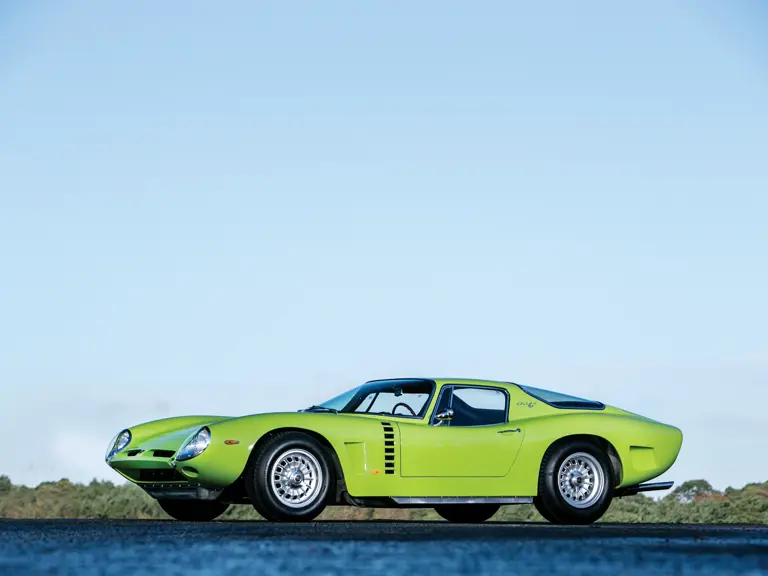


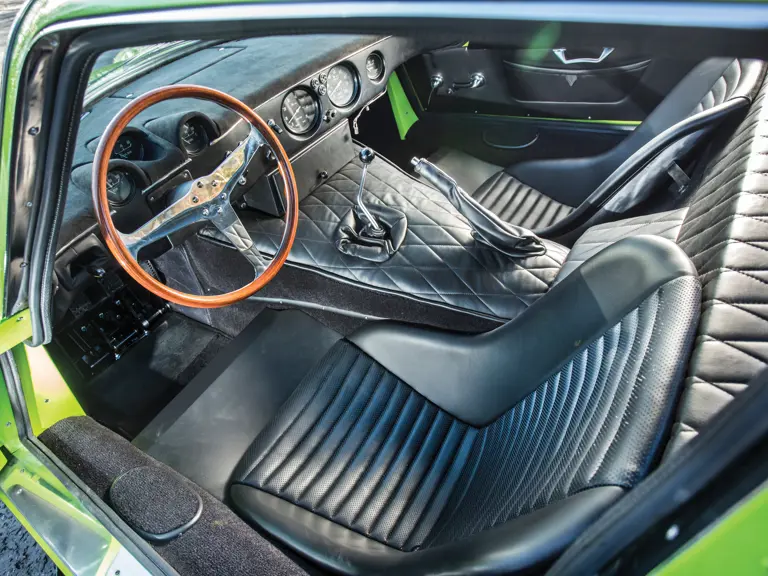

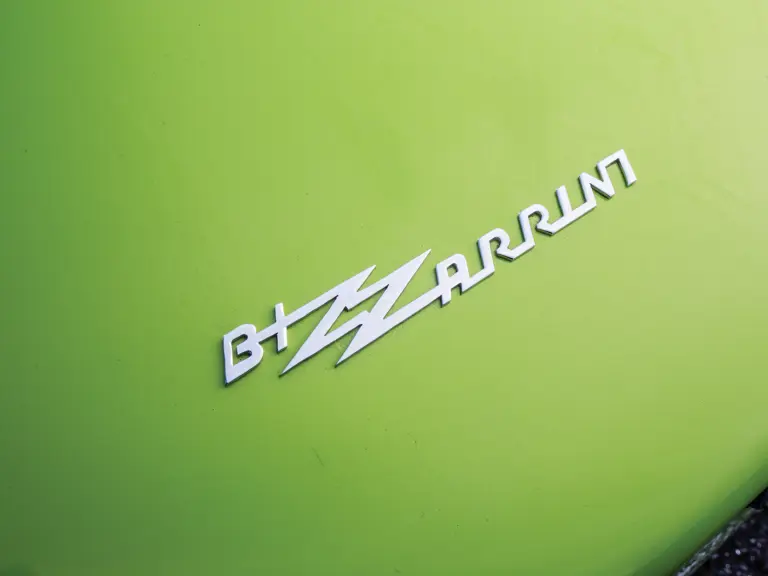
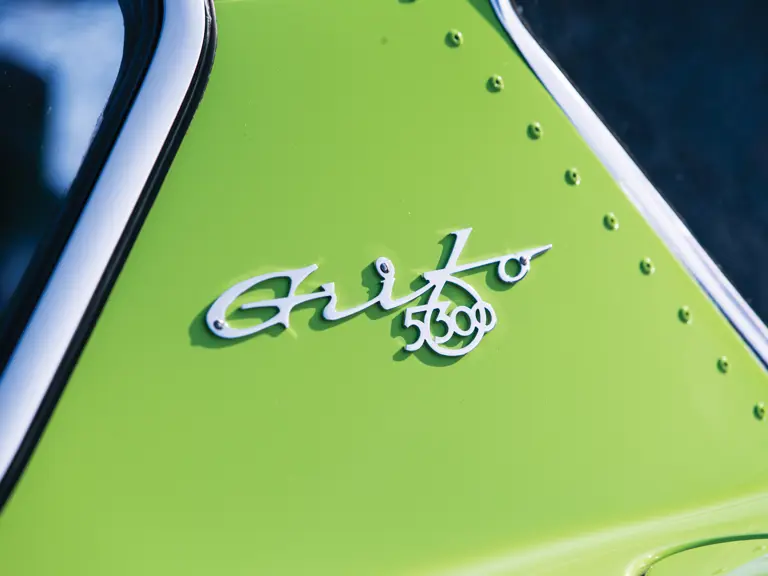
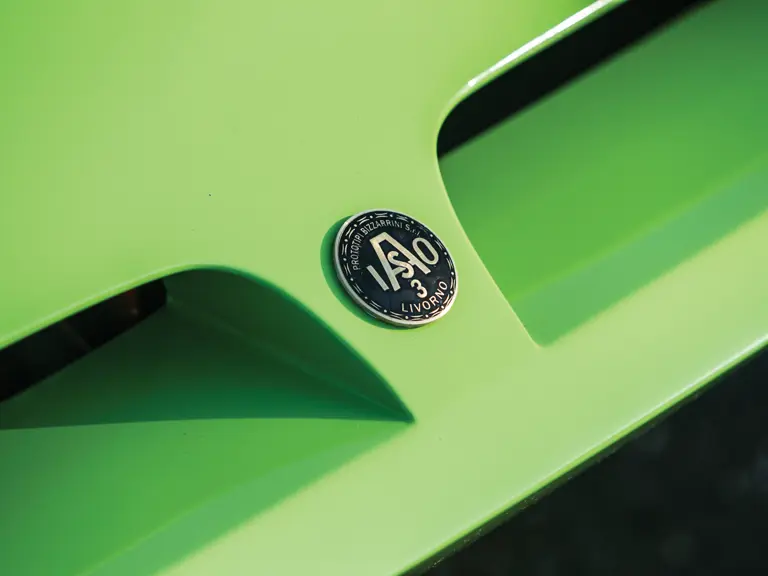
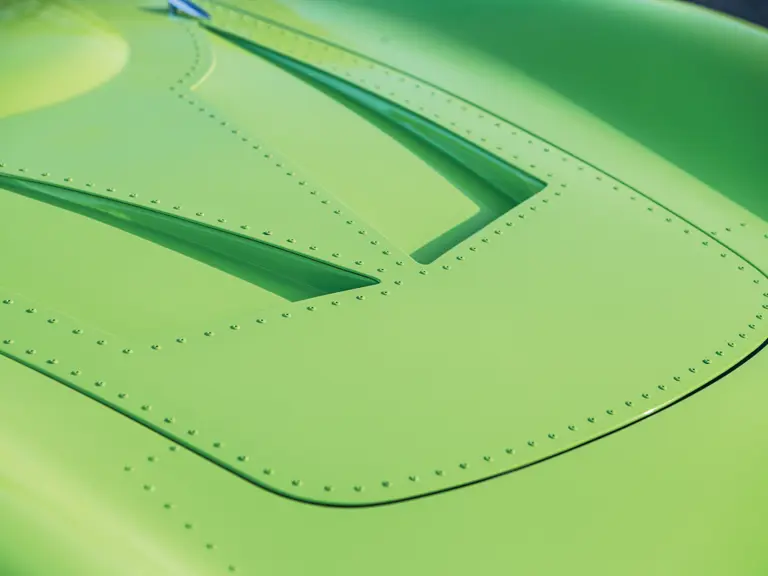

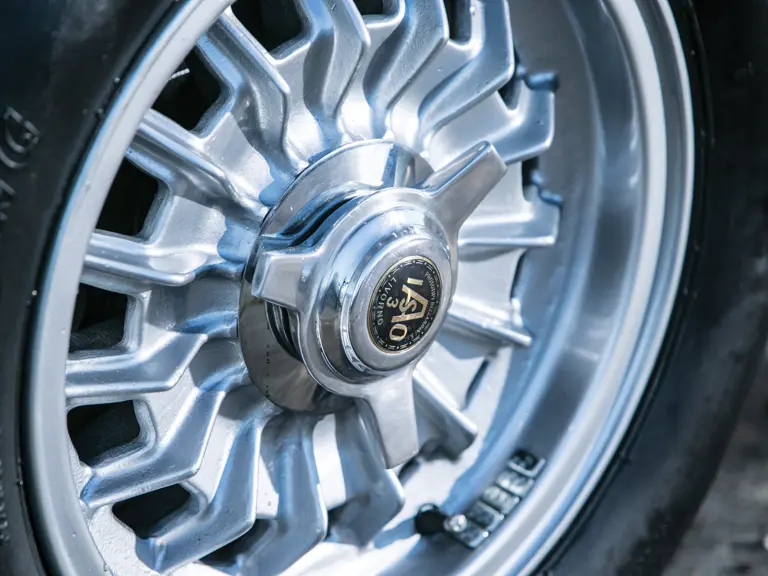




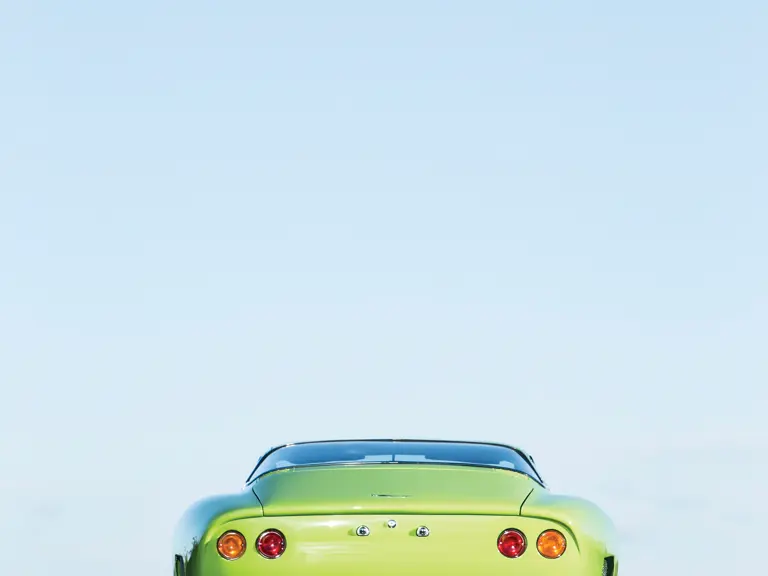
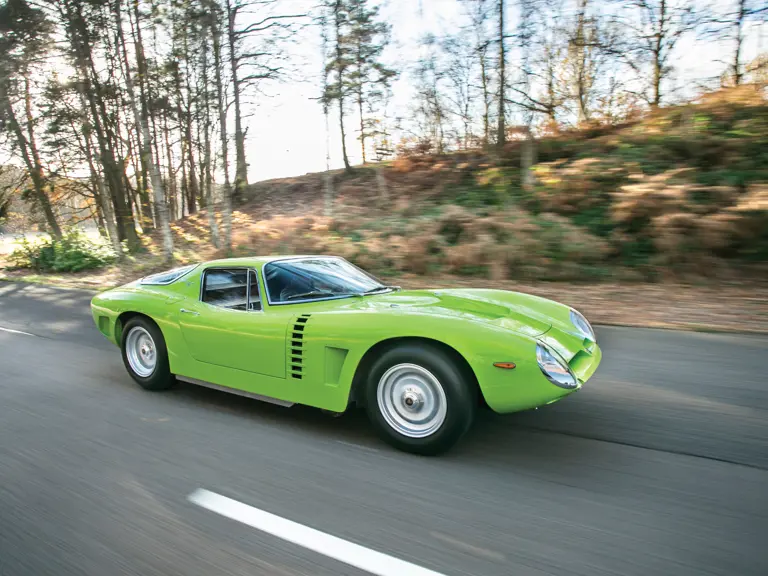
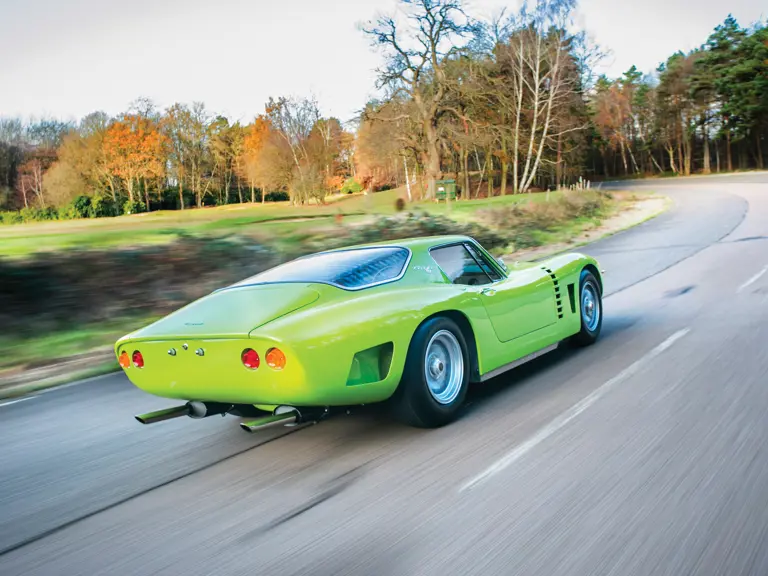


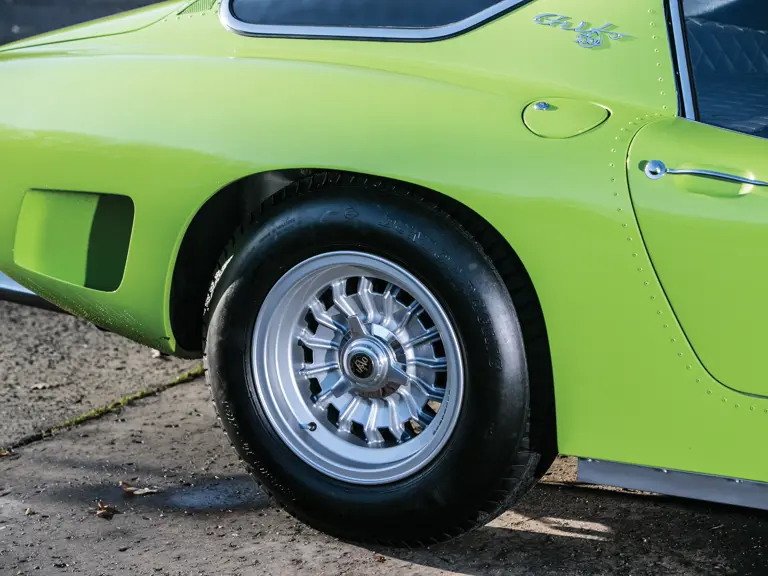

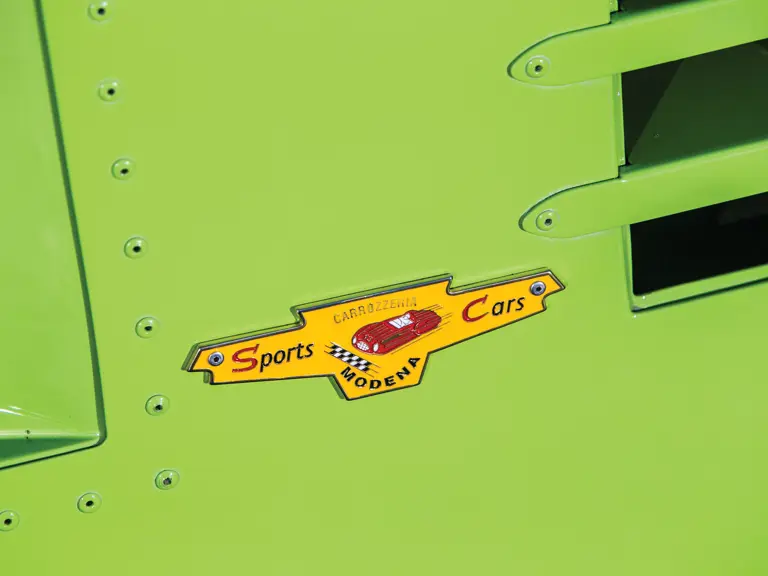

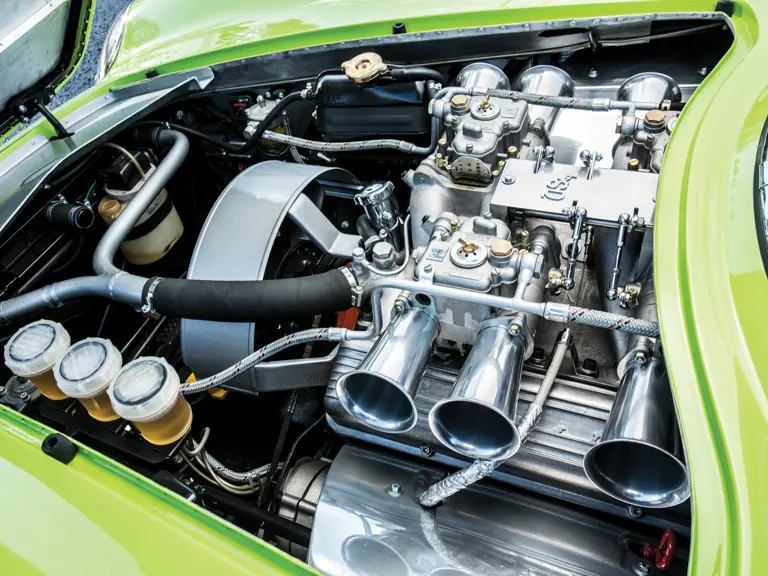
 | Paris, France
| Paris, France

